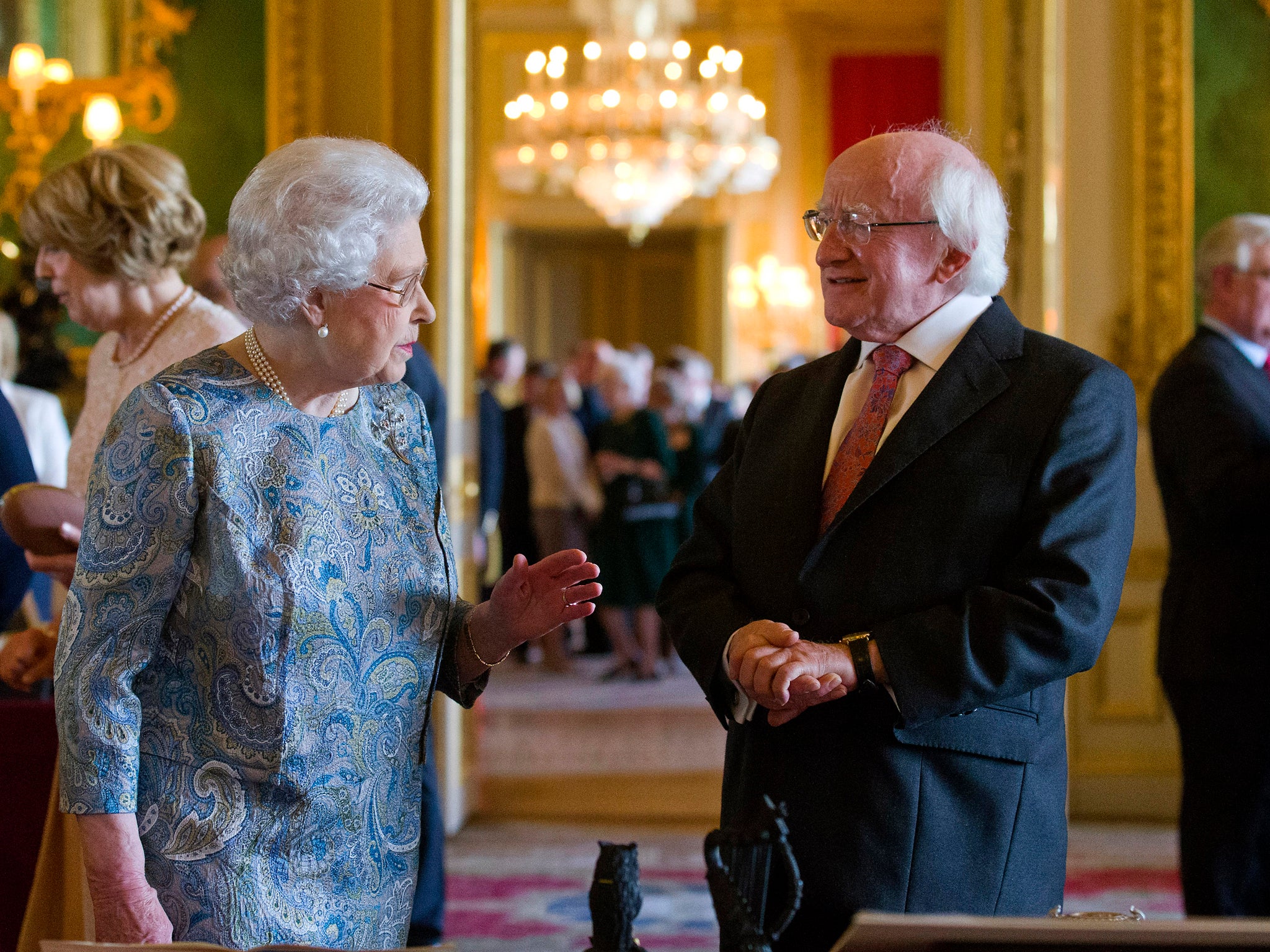Michael D Higgins' UK visit: Milestone in politics to coincide with a milestone in economics
Higgins' visit comes at a time when Ireland's economy is at last creating jobs in solid numbers


Your support helps us to tell the story
From reproductive rights to climate change to Big Tech, The Independent is on the ground when the story is developing. Whether it's investigating the financials of Elon Musk's pro-Trump PAC or producing our latest documentary, 'The A Word', which shines a light on the American women fighting for reproductive rights, we know how important it is to parse out the facts from the messaging.
At such a critical moment in US history, we need reporters on the ground. Your donation allows us to keep sending journalists to speak to both sides of the story.
The Independent is trusted by Americans across the entire political spectrum. And unlike many other quality news outlets, we choose not to lock Americans out of our reporting and analysis with paywalls. We believe quality journalism should be available to everyone, paid for by those who can afford it.
Your support makes all the difference.It is a milestone in politics; but it coincides with a milestone in economics. The state visit by the Irish president Michael Higgins comes at a time when his country’s economy is at last creating jobs in solid numbers, a sign that the recovering world economy is pulling even those countries most savaged by the recession back to growth.
Ireland is fascinating not just because it happens to be the UK’s nearest neighbour, with a land border, all the links of language and culture, and be the UK’s fifth largest export market. It is an extreme example of many of the trends in the world economy over the past decade.
Ireland has been, in proportion to its size, the most successful country in the world at attracting inward investment, and through the 2000-2007 period the fastest-growing developed economy. It had just about the most extreme property boom, and the most extreme subsequent collapse. It had proportionately the biggest banking crash, and - Greece apart - the severest collapse in GDP. And now it is the first of the eurozone’s troubled fringe to start perking up, for the flip from stagnation to growth seems at last to have occurred.
The Central Bank of Ireland, a cautious and reliable forecaster, has just predicted that the economy will grow by 2 per cent this year and 3.2 per cent next. That compares with minus 0.3 per cent last year and a plus of only 0.2 per cent in 2012. Why has it all taken so long?
There is no simple answer but elements include the continuing squeeze on domestic incomes, a battered banking sector unable to finance expansion, the huge personal and public debt overhang, and an export sector that while successful is too small to offset the decline in the domestic economy. Some of us would add - though it is contentious in Ireland - membership of the eurozone, for that stopped Ireland devaluing when its largest export market, the UK, let sterling slide by 20 per cent. There is also a more technical issue, for Irish GDP has recently been depressed by a number of drugs produced by the multinationals coming off patent, thereby reducing export numbers.
But job growth is now solid at 60,000 last year, roughly the same as the UK proportionate to the two economies, and the Central Bank forecasts unemployment to fall from 13.1 per cent last year to 11.3 per cent this year, and to 10.5 per cent in 2015.
People will try and draw specific conclusions from this, and in Europe one of the messages you hear is that austerity works. That does, however, ignore the human, social and regional costs – the fact that so many people had to leave the country to get jobs, the debt burden on people who bought homes near the top of the market, and the minimal recovery outside the Dublin agglomeration.
A wider and perhaps more useful conclusion is that the rising tide of the world economy is floating all boats. Yesterday we had the new forecasts from the International Monetary Fund, where the headline was another boost to the UK, which it now expects to grow by 2.9 per cent this year. Less noticed was the reasonably upbeat tone for the world economy as a whole – slightly slower in the emerging world, slightly faster in the developed.
A year ago the IMF was concerned about a skewed and bumpy recovery. And while things are still uneven, as you might expect, they are somewhat better balanced than they were. Europe in particular is growing again, with the eurozone growing by 1.2 per cent against a contraction of 0.5 per cent last year.
One of the things I was taught when I did my economics (at TCD in Dublin actually) was that you should always try to confirm macro-economic data with micro-economic facts. So here is what has been happening to car sales in Ireland. In the first three months of the year they were up 26 per cent on 2013, making it the best quarter since 2008. In fact in those three months, Ireland sold two-thirds of the number of cars it sold in the whole of last year. That is almost 50,000 cars – 50,000 families that feel, phew, we can risk divvying-up for a new motor. Better still - for this reflects business confidence rather than consumer confidence - light commercial vehicles are up 43 per cent in the three months, and heavy commercials (trucks and the like) up 40 per cent.
So a welcome to the Irish president, but also a welcome to these signals of an uplift across the Irish Sea.
Join our commenting forum
Join thought-provoking conversations, follow other Independent readers and see their replies
Comments